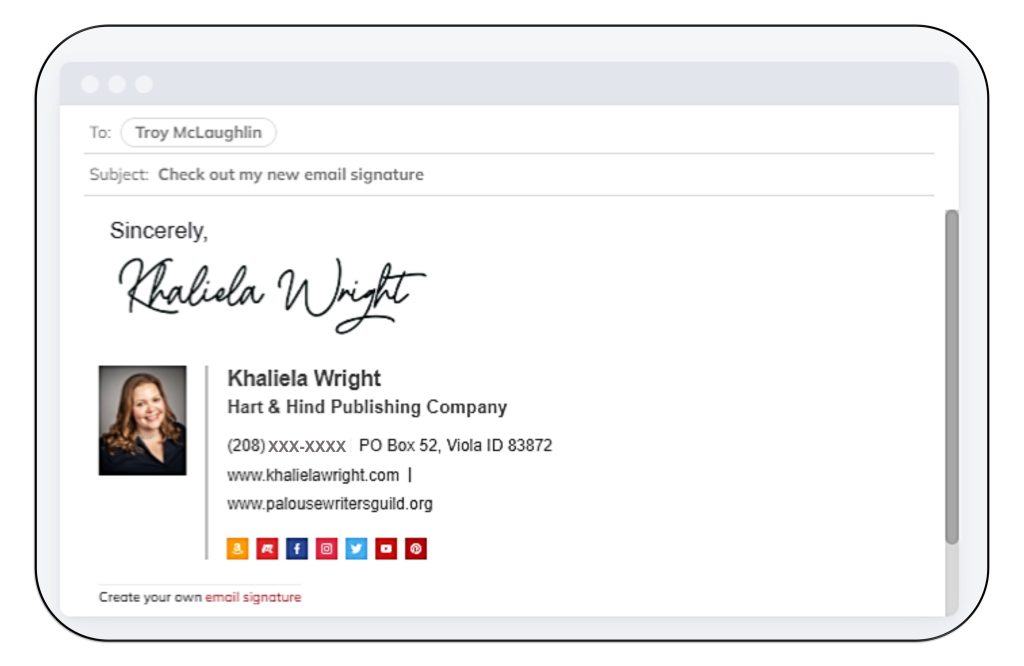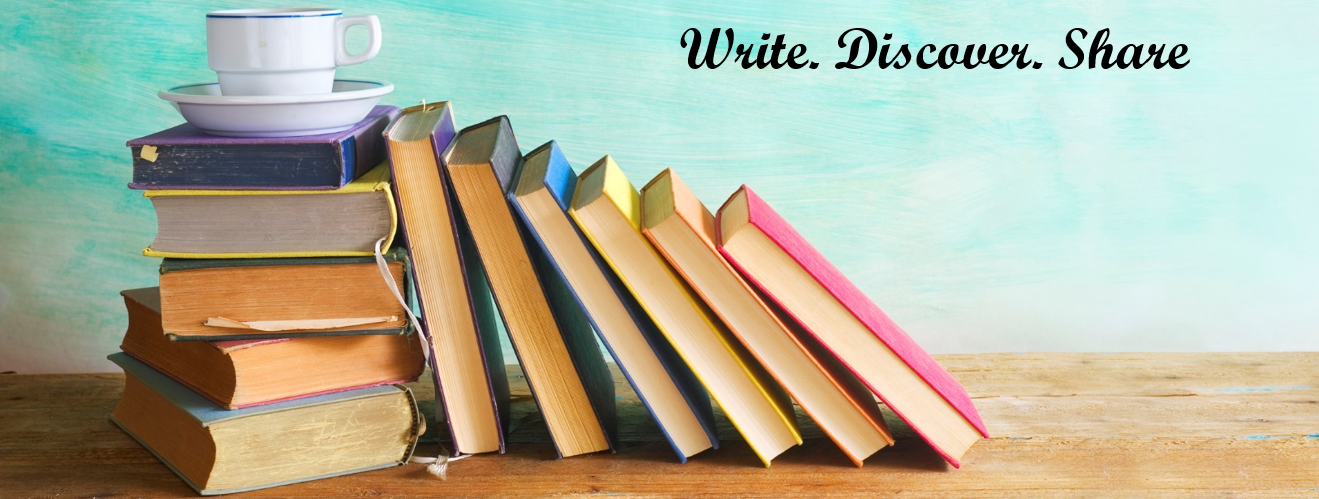Every author needs a newsletter. Newsletters get mixed in with blogs, guest articles, and social media posts . . . all things an author must write when they’re not writing a book. If it sounds painful, it shouldn’t. Why? Well, because newsletters are letters. They’re a special way to share your personal life and build connections with readers.
An author newsletter should contain the kind of updates you’d send a favorite cousin. The email format allows authors to be more personal and candid than they would on Facebook or Twitter. It’s the place to open up, be a little vulnerable, and totally authentic because newsletter subscribers truly care about and support the author as a person.
Develop a loyal readership by showing off your personality, sharing stories from workshops, and occasionally including pictures of pets. Don’t turn your emails into a diary. Just give small insights into your personal life and be sure to include something fun. Once readers understand that your newsletter is a conversation, not an incessant one-way sales pitch, they’ll be more engaged and far more likely to open the email.
Newsletters fall into two broad categories: single topic and variety style. Single topic newsletters work great for non-fiction authors. It gives them space to convey the type of detailed information their readers crave. Fiction authors are better served by using a variety style newsletter because it offers more opportunities to capture the reader’s attention.
Every newsletter will have the same basic format: Header, Body, Signature. The header and signature will essentially stay the same month after month. It’s the body of the email that changes. Below is information on what to put in each section:
HEADER
At the top of every newsletter should be the title, volume, and an appropriate graphic that captures the essence of the newsletter. The title and graphic will be used for years, so choose wisely.
BODY OF THE EMAIL
To make life easier, break this into sections and tackle each section separately:
- Main Story. (Between 300 and 500 words and include a fun picture.)
Since the goal of a newsletter is to build connections, this section should be about the author, the readers, the writing community, or about the book in a fun way. The space to speak about the nitty-gritty book writing process is the writing update. - Writing Update. (Between 100 and 300 words)
This will be the easiest section to fill, since you are likely writing, revising, or marketing a book. Give behind the scenes updates about the writing and publishing process. Just remember, most people in your audience aren’t authors, so don’t bore them with craft or use a lot of jargon. Be sure to let readers know when your book is available for pre-order, and it’s expected launch date. - Free Space. (Between 100 and 300 words.)
Use this space for random odds and ends that captured your attention and you think might interest your readers. - Short Bio and Author Photo. (100 words or less.)
SIGNATURE LINE
By law, you are required to provide a link to allow readers to unsubscribe from your email list. Aside from that, you’ll want to include the following:
- Links to social media and Goodreads
- Link to Personal Website
- Link to purchase book and/or Amazon author page

I recommend using a tool like Wisestamp to create awesome email signatures. (See above example.) These can even be imported to your personal email, enabling you to discretely direct people to your website with every email sent.
Content Ideas for Author Newsletters
So, what do you put in a newsletter if not pleas to buy the book? Lots of things. Just remember to keep it interesting and keep it short.
Do not send entire articles via email, link to them. This gets readers used to clicking through to read your blog or other articles. That way, they’ll already be familiar with the process to click through when it’s time to buy your latest book. It also allows readers to skip content they aren’t interested in so they won’t feel bogged down by irrelevant information, which could cause them to unsubscribe. Below is a list of content ideas for author newsletters:
Author Related Information
- Blog Post Excerpts
- Recently Published Articles
- Calendar Items — Include information on upcoming readings/signings, book fairs, festivals, webinars, podcasts, etc. Also include personal items such as vacation or travel plans, which could lead to readings/signings if you will be traveling in an area with lots of fans.
- Personal Life — This gives subscribers insights into a writer’s life. Great items to include are tidbits about your hobbies, photos of pets and your writing space.
Book Updates
- Background Research — Readers of science fiction, historical fiction, and fantasy are often interested in topics related to the book. Share some of your research and explain how those details impacted the story. Another fun item to include is book related recipes.
- Editorial Book Reviews
- Cover Art and Trailer Reveals
- Discussion Topics from the Book.
- Promotions and Deals – Share book release dates, pre-order information, and deals or discounts on your existing books.
Freebies and Giveaways
Wow your readers with a free gift! This could be a contest to win an autographed copy of your latest book, autographed posters, bookmarks, or other book related author swag. Also, freebies do not have to be tied to contests. Some digital freebie ideas are listed below:
- Ideas for fiction writers: prequels or side stories, short stories, excerpts or bonus chapters, drawings of characters or scenes, and book related trivia.
- Ideas for non-fiction writers: informational ebooklets, short video courses, and handouts from your speaking engagements.
Random Bits of Fun
- Memes and Jokes
- News of the Weird
Reader Engagement
- Reader Questions — Ask readers which scene or character they liked most and include a couple answers in the next newsletter. Or invite your readers to ask you questions and then answer a few reader questions in the next newsletter.
- Reader Reviews of Your Book.
- Launch Team Invites and Calls for Feedback — Ask readers for advice and help with launching your next book by letting them choose between book covers, contributing creative skills to the campaign, and sharing your launch campaign on social media. Giving readers a small voice in parts of your writing creates a sense of ownership over your work. As a result, they’ll be emotionally invested in your success and want to follow your progress. And while you’re at it, reward them with perks like bookmarks or other author swag.
Writing Community Connections
- Genre Related News – Sharing an article you found interesting is a great way to fill space. No writing required!
- Cross Promote with other Authors–Make announcements and do interviews for fellow authors, which can lead to reciprocity down the line.
- Share what you’re reading, especially if it’s similar to what you write.
A successful author newsletter lets readers feel like they are part of the “cool kids club.” The cool kids get the inside scoop, available nowhere else. Whenever you have important information to announce, like cover art or a book trailer, tell them first! It’s a small act to reward their loyalty and lets fans know how much their support means to you.
Most people find that a monthly newsletter works well for reaching readers without the activity feeling burdensome to the writer. Sending a newsletter more often feels like spam to the reader and cuts into writing time for the author. If you’re like most authors, who work a day job and struggle to find writing time, it’s perfectly acceptable to have a quarterly newsletter. However, sending newsletters less frequently gives readers time to forget they subscribed.
Want to see what’s in my quarterly newsletter, The Hind End? Simply enter your name and address into the form below and I’ll happily send you the latest version.
For more information on creating an author newsletter, visit:
14 Content Ideas for Author Newsletters
How to Create an Author Newsletter That Isn’t Terrible
